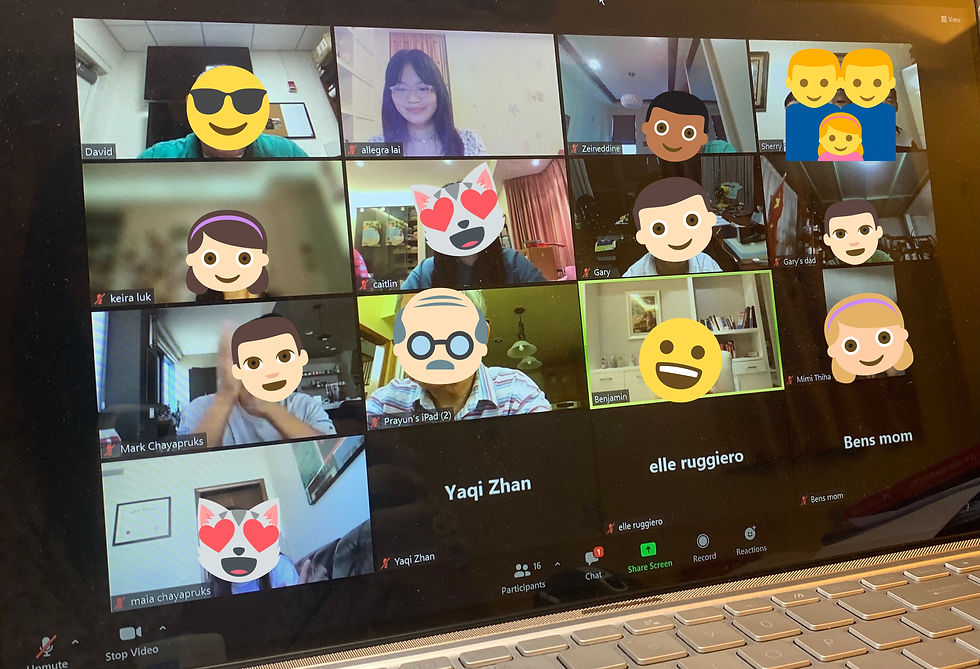Communication is an indispensable bridge between two parties. Clear communication helps avoid misunderstandings and frustration. However, what happens to communication when the world is trapped in a pandemic? We have to comply with mandates of social distancing and mask wearing, which offer protection from the virus, but these measures have also shifted our forms of communication drastically. For many months, our communication has been restricted to online connections, resulting in an increased usage of online applications like Zoom or Google Meet that replaces face-to-face interactions.
What is distance learning? According to the Oxford Learner’s Dictionary, it is “a system of education in which people study at home with the help of special Internet sites and send or email work to their teachers.” As a student who has been going to school via remote learning with only occasional face-to-face lessons, I can attest to the benefits and insufficiencies of this new norm.
Distance learning offers some advantages over physical classrooms. It provides a learning experience that extends beyond textbooks. Instead of the conventional classroom-and-whiteboard format, online video applications offer functions like annotating, which give students a more interactive experience. Using the annotation function, shy students may find it easier to participate and “speak up” in classroom discussions. Teachers can also make annotations on the material that can be shared to the students for review later on.
Some video applications also offer the “record meeting” function. The host can record the meeting and share it with the participants afterwards, allowing students to replay the classes and review the material. Students who find it harder to follow the progress during classes can replay the recording, making it easier for them to stay attuned with the class. This type of self-paced learning can help students make use of the class material in their own way, which can be especially useful at exam crunch-time.
Nevertheless, the phenomenon of “digital divide” has risen as the pandemic lingers. It refers to the disparity among different social groups of their access to the Internet and electronic devices. According to the Legislative Council’s website, 94% of households in Hong Kong had Internet access as of 2019. However, for families with a monthly income below HK$10,000, Internet access was at a much lower rate of only 71%. For the 302,000 citizens still living in the “low-income” bracket, this situation was exacerbated when the pandemic hit. Furthermore, many breadwinners in these families might have lost their job during the pandemic as economies came to a standstill. These statistics and background give us insight to the number of students who could be lacking the necessary technology for online learning. In some larger families, the Wi-Fi at home is most likely inadequate, with constant lagging issues and unstable connections. Family members also need their own devices and privacy for their respective meetings, and yet many housing units in Hong Kong are too small and spaces have to be shared with others in the family, thereby creating distractions that lower productivity. Compared to normal classrooms, this can potentially widen the inequalities between students from different income brackets, as students from low-income families simply cannot afford the facilities needed.
Online learning is also especially hard for students with certain impairments, disabilities or behavioural disorders. According to an interview conducted by EdSurge, parents of visually-impaired children are under a lot of stress to make sure the class content is not only accessible, but also usable for their children. Even if a visually-impaired student had access to a video of a teacher explaining a math problem graphically, it would be meaningless to them. How could one expect a visually-impaired student to read the braille of a video when audio guidance cannot be catered?
Similarly, hearing-impaired students are also deeply affected. Masks create a major obstacle for the hearing impaired from lip reading, thus hampering clear communication. On video applications, subtitles are not provided, which makes learning difficult for the hearing impaired. Some teachers may still be teaching online from school and would have to wear masks, so it would be impossible for the hearing-impaired students to lip read. Furthermore, sign language is also hard to read on video calls through the small panels.
Students with different disabilities or impairments choose to attend schools that specifically cater to their needs, so they can have a more productive learning environment and peers they can relate. These schools teach students in different ways, such as using sign language or braille, which cannot be easily adapted for online learning. Under this pandemic, it is doubtful whether online school is a viable substitute for them to learn.
Despite technological advancements, online learning cannot replace going to school physically. Even for metropolitan cities in first-world countries, technology can still be inaccessible to provide a functioning virtual classroom for students who need special care. The government does not have policies or sustainable funding in place for low-income families to subsidize their children’s learning. This gives the privileged and higher income families an unfair advantage in access to technology, not to say small apartments without individual spaces can also be a problem for online learning in Hong Kong. Technology and connection issues are common, whereas some teachers have raised concerns that they lack technological knowledge and find it challenging for them to teach classes virtually.
While we cannot foresee when the pandemic will end, hopefully we will soon be able to provide a functioning, inclusive virtual classroom for everyone. To achieve that, the government needs to update their policies to secure necessary facilities for the underprivileged, so that they will not be excluded from the same learning opportunities as the privileged. It also needs to consult different parties and come up with ways for students with disabilities or impairments to learn comfortably and meaningfully in a virtual classroom. The insufficiencies clearly outweigh the benefits of distance learning. It can only be a short-term substitution during the pandemic, rather than a viable option for the long term.

Commentaires